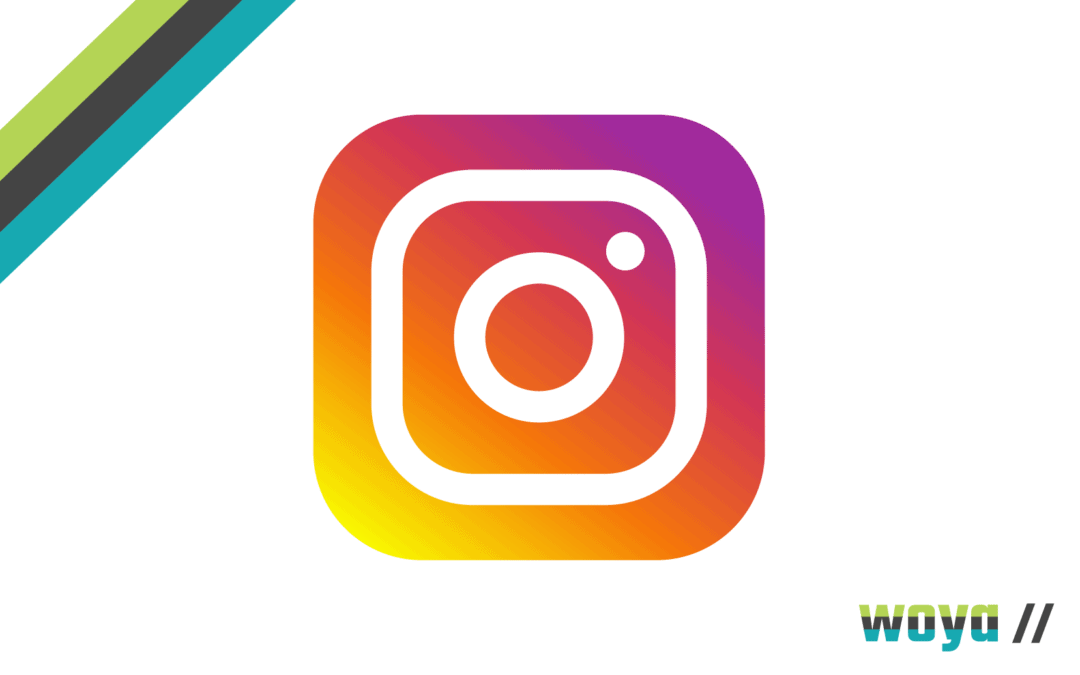
5 Tips To Grow Your Instagram Followers
Reading Time: 4 minutesAs of August 2022, Instagram was the second most used and most downloaded app in the world, a position its held since its introduction of extra features back in 2010.
For businesses looking for growth on social media through exposure to both existing and potential customers, an active and engaged Instagram account is a must! When it comes to techniques and advice to grow your Instagram followers, you’ll find thousands of internet pages dedicated to loops and paid-for services, but many of these solutions could do more harm than good.
The real key to growing your following? Nail the basics.
Why Should You Look To Grow Your Instagram Followers?
Put simply, the more people that follow you, the more people are exposed to your content, and therefore your products and services.
While both Instagram followers and business growth aren’t linear, you should look to grow your Instagram followers to both assert authority and increase marketing exposure. The more engaged an account’s following is, the more likely the Instagram algorithm is to present and feature its content elsewhere to other targeted parties.
-
Optimise Your Instagram Bio
There isn’t much room in an Instagram biography, but it needs three basic things to inform your audience from the ‘off’: who you are, who you’re for, and where to get more info (key-worded accordingly).
The latter can be covered with a link to your main website or online presence, and the rest bullet-pointed for convenience. A common error made is for businesses to link to a third-party website optimised for smaller devices: but if you have an existing web presence, instead this should be replaced with an optimised page on your own website to increase your traffic.
An Instagram bio. is short, sharp marketing, with no room for ambiguity.
-
Increase Share Quality
The content your business shares on all social media platforms should be of a decent quality, but should also be tailored for the social media channel that it’s being shared on.
A key way to grow your Instagram followers is to ensure that your content is shareable and saveable – it must be perceived as valuable enough for others to want to highlight and pass on. If your business can position itself as an expert in its niche, those interested in that area will want to follow you for exactly that reason.
A mix of content is key here. Despite widespread criticism of the app’s direction in promoting video content, Instagram exec Adam Mosseri has insisted that Reels will continue to grow in their promotion and will be favoured by the algorithm’s programming. This means that businesses need to produce a good balance of photo, video and graphical content: to both please the behind-the-scenes programming of the app, and to present the desired audience with a variety of solutions.
-
Use Hashtags – Wisely
Each feed post on Instagram can have up to 30 hashtags, and each story 10. It’s always worth having a hashtag that is specific to your small business or product, but then research into hashtags relevant to each post to include them.
The Instagram app allows for hashtags to be utilised whether they’re shared on the initial post or in the first comment below; but realistically the standard caption works just fine unless it’s combined with long-form comment.
Ideally, choose a variety of tags with between >100k and >500k uses. Check each tag before you use it: not all acronyms may mean what you think they do! Where possible, include hashtags as niched as possible and any that may be topical to current affairs (but still relevant to the business).
-
Utilise Instagram Stories And Reels
Where your feed may seem branded and beautiful, Instagram Stories and Reels presents the opportunity for much more on-the-move and off-the-cuff personal social media marketing.
Use these to connect more personally with others, share customer content and to give an insight into behind-the-scenes activity that customers (both potential and existing) otherwise wouldn’t see.
Stories can be further optimised by the curation of a selected ‘Close Friends’ list. If there are particular accounts you wish to see your content, adding them to such a list makes the more likely to click through to it (the Stories will be featured in a different colour and placed higher up the exposure rankings) and allows for more tailored content to be used strategically. Don’t forget to keep your DMs open for customer contact!
-
Connect With Other Businesses
It may seem counter-intuitive to connect with your competitors, but actually, there’s business growth benefits to be gained from doing so. Follow them to keep an eye on their activity and followers, and to ensure you’re meeting your client’s needs just as they do (or better!).
Tagging other businesses and products in your posts will increase your visibility, and following other businesses will allow you to see what they are up to, and keep an eye on trends. Competition can stay healthy without being toxic.
What Not To Do To Grow Your Instagram Followers
The internet is stuffed full of offers for brands and influencers alike to buy followers, boasting that they’re real and ‘high quality’. In truth – they’re not.
These services are simply reams of bots, ready to clog up your follower count with accounts that are blatantly obviously false, will only skew your social media insights, and will result in the Instagram algorithm penalising you as a result.
Many businesses also use social media ‘loops’ to grow their Instagram followers, but this too simply falsely inflates the numbers. Loops are follow-for-follow groups whereby everyone involved agrees to follow everyone else. Realistically this only clogs your feed with content from accounts unrelated to your business, and gives you followers who, although real, will never engage with your content because it isn’t relevant to them.
The true measure of success on Instagram is engagement, and if you’re able to attract followers who actually really care and are interested in and value what you are posting, they will engage with your content. So continue to find this real, interested audience, and post for them.


